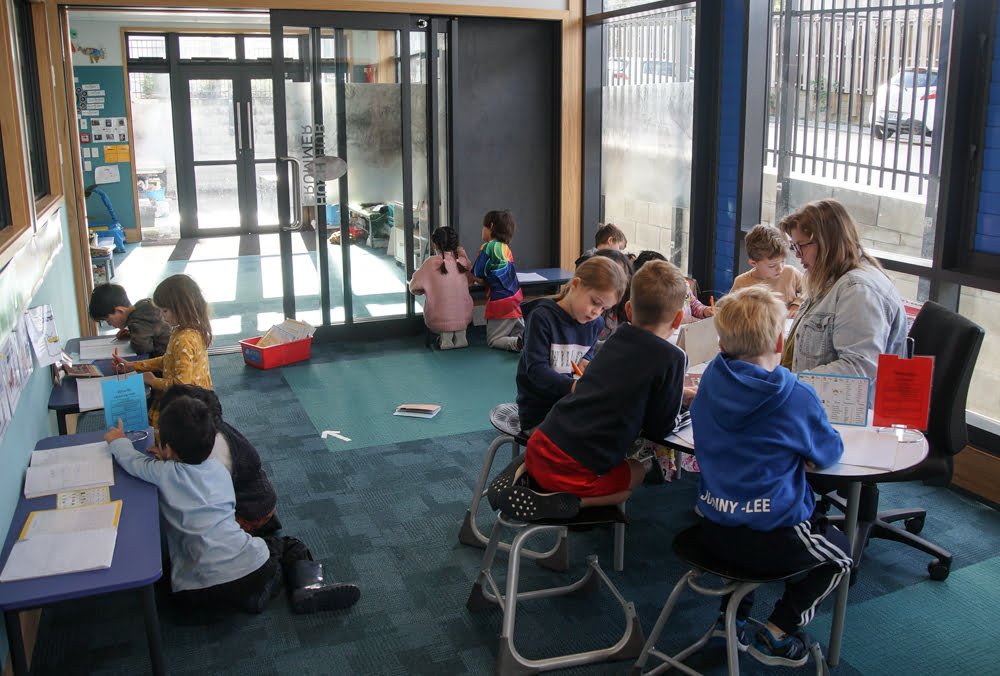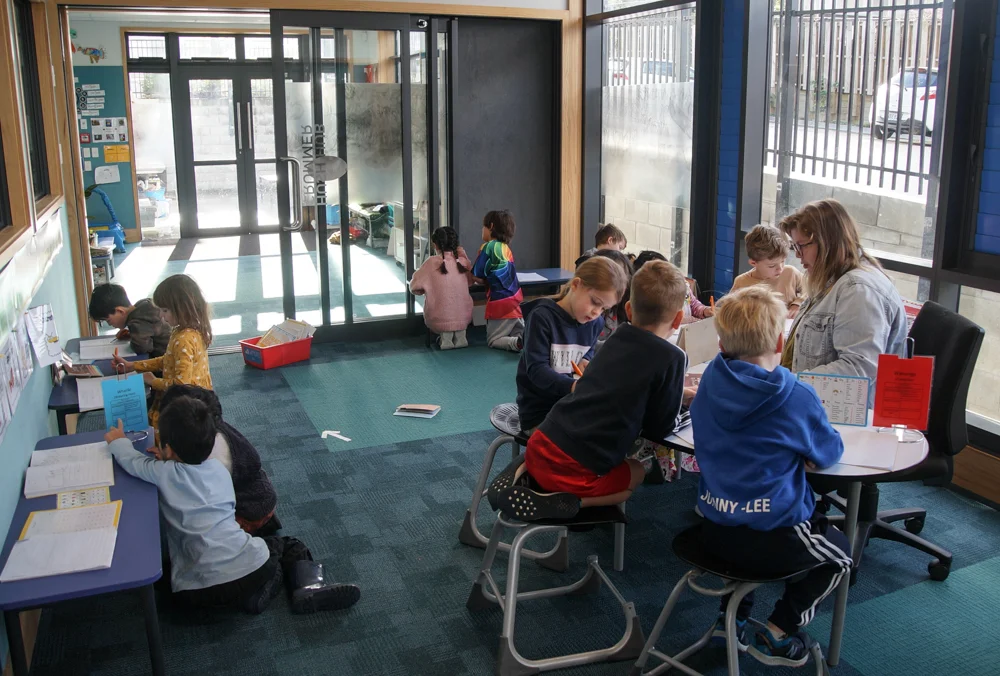This week we are back in Grey Lynn School to catch up with the year 1 and 2s to see how they are defining learning activities within their use of space.
Transitioning into the use of more collaborative learning environments is a learning journey for students and all staff. The Planning Learning Spaces in Practice projects have all recognized the importance of developing a local and relevant shared language that helps to describe the use and intended learning activity for the students and staff in more open environments.
Jody Hayes and Alice Nicholson-Byers are two of the three teachers in the Year 1 and 2 space at Grey Lynn. They had indicated that they wanted to explore ways that they could more effectively communicate the learning behaviors and activities that they wanted to convey to all students and staff in their learning zone. Jody comments on the collaborative spaces.
We have recognised the importance of ensuring we meet the full range of students needs in our collaborative spaces. There are many considerations and layers of activities to plan and to think on that we have been establishing as we develop the use of these spaces. This is particularly important as teachers who are new to the school and come to work with our more collaborative learning approaches.
With the support from Planning Learning Spaces, I have been working with the school to support the development of appropriate language that can be used to describe the learning activities in their new spaces. As we’ve seen in previous blogs the school developed ‘Activity Posters’ that conveyed through the use of simple local language and visuals, what activities were expected at that time in that space. We have recognised that although the posters are effective in identifying learning activities in a learning space, they are not adaptable to reflect the changing nature of multiple learning activities in a space through the teaching day. In a bid to take the posters off the walls and place them in the action, we are prototyping the introduction of MAPs (Movable Activity Placards).


Jody finishes with her comments on the effectiveness of the MAPs.
I believe the MAPs are the key to empowering students to decide what they need (as the next stage) as they consistently support the communication of what may otherwise be a hidden or invisible component of our space. They are key to creating and maintaining a shared language of learning.
With the MAPS being small and with their portable nature, this will allow the activates to be indicated in different areas at different times of the day or indeed to be taken with us to the library or to our outdoor classroom or even further afield when involved in Education outside the classroom (EOTC). The MAPS can also support students with learning needs, for example, the use of the imagery of the Cave could be used as a concept to support students in self-regulation as they meet their sensory needs when they are feeling overwhelmed.
Planning Learning Spaces believe that by developing the approaches that Jody and Alice are describing will empower students to work with staff to co-create and lead their own learning. This collaborative partnership starts to develop a more self-managing approach to the use of space engaging the students in where, when and how to learn.
Our next post from New Zealand will be back to Oranga School who have a very special celebration with the opening of their new learning space.
Written by: Doug Crutch (NZ Facilitator)

